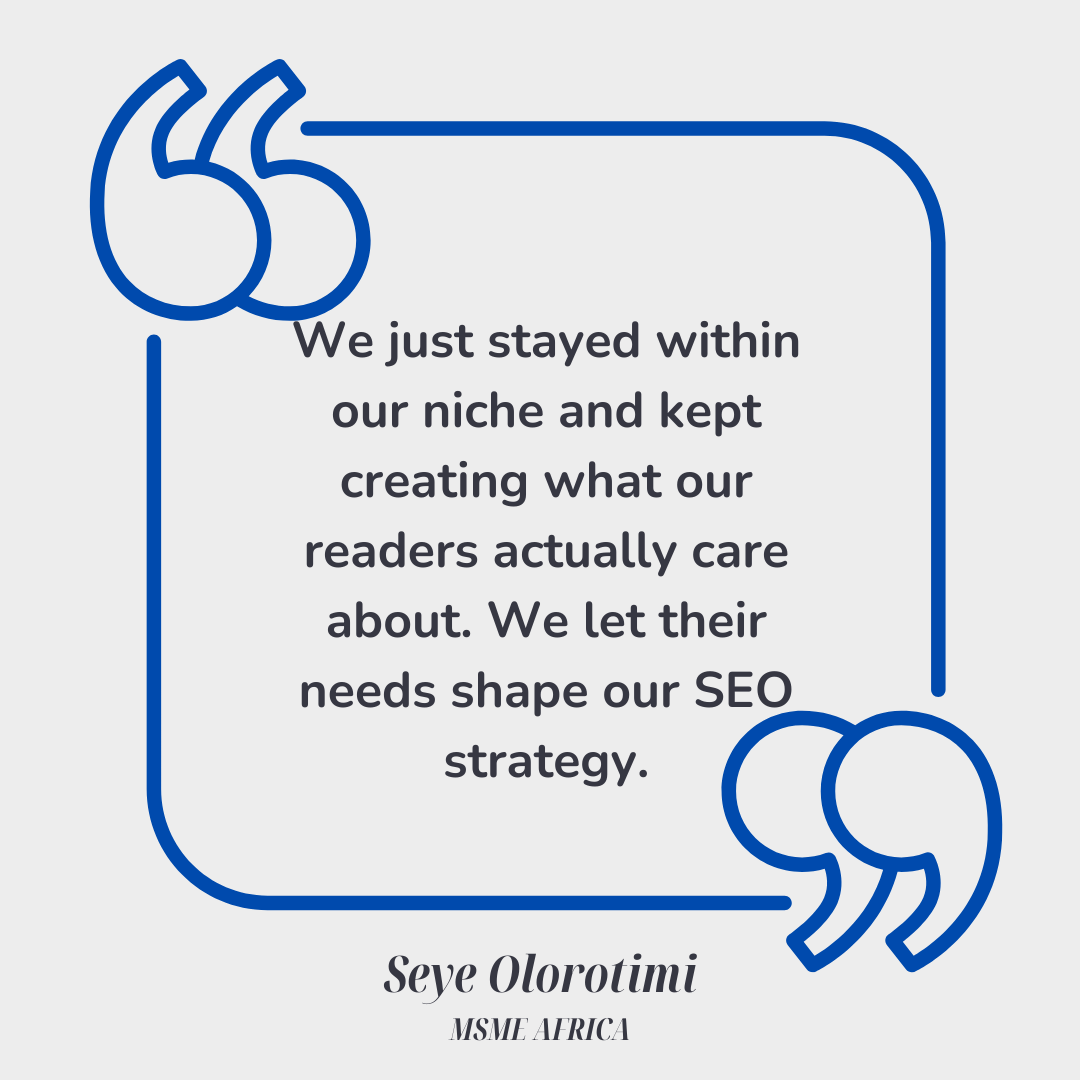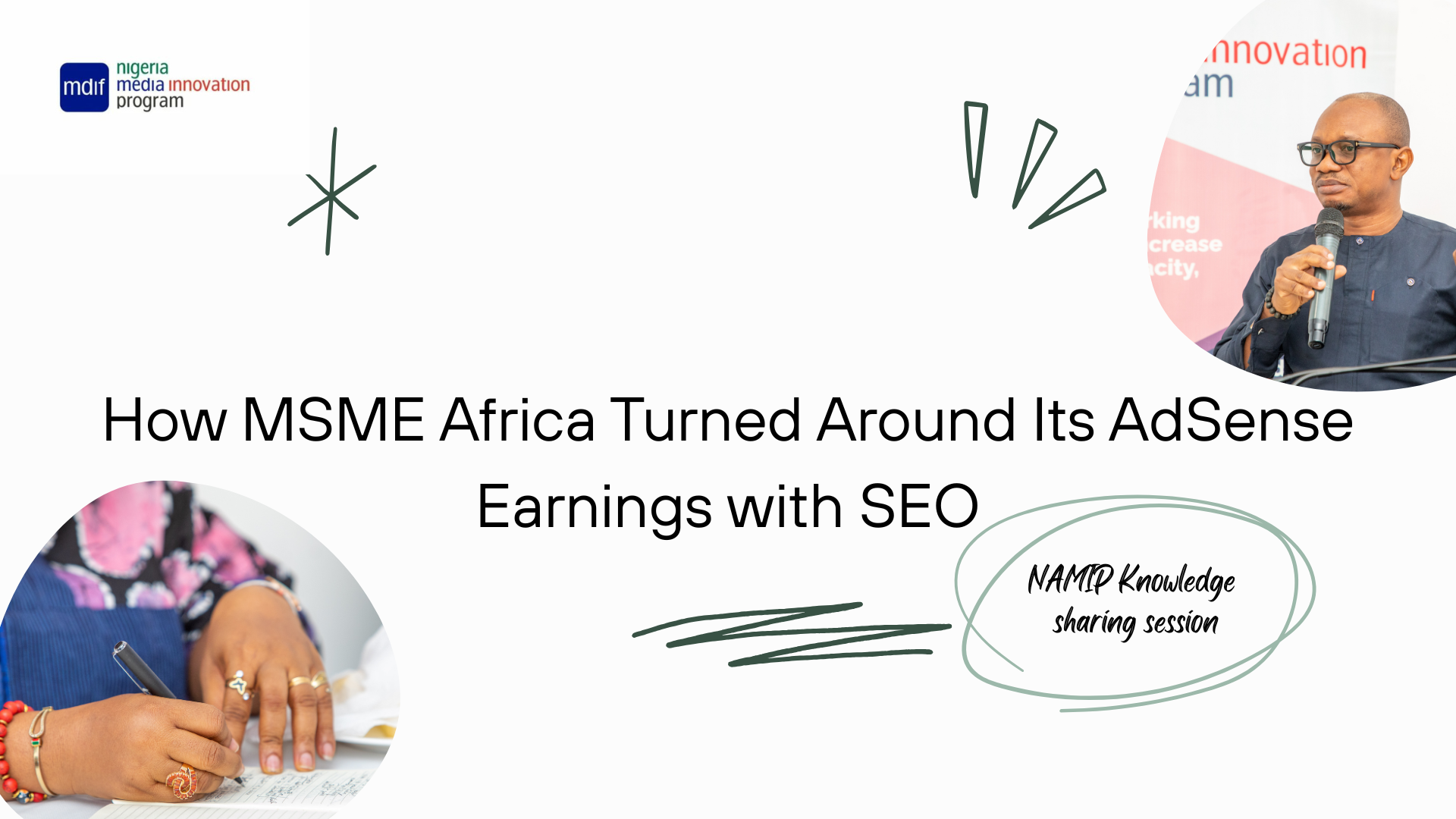…This essay is a part of NAMIP’s Knowledge Sharing Sessions series, where participants share solutions they have deployed to common problems within Nigeria’s media ecosystem.
When MSME Africa first signed up for Google AdSense, it seemed like an easy process as they got approved on the first try. However, it would take them almost eight months to make the first $100. Seye Olurotimi, CEO of MSME Africa, told NAMIP that those early days were “discouraging.” The biggest issues were low traffic, delayed payouts, and very low cost-per-click (CPC) rates.
That slow start turned out to be a blessing in disguise. It forced them to rethink their approach, and that’s where SEO came in.
What Changed?
They got deliberate about strategy. They began focusing on internal linking, building better backlinks, targeting high-CPC keywords, and publishing more engaging content with punchy headlines and smart meta descriptions. The results weren’t instant, but they came. “It took about three months, but we started seeing noticeable changes in our earnings,” Seye said.
Tracking what matters
One big lesson they learnt was that your AdSense dashboard is full of clues, if you know where to look. Seye recommends keeping an eye on:
- CPC (cost per click)
- CTR (click-through rate)
- Your best-performing pages or categories
- Ad formats
- Traffic sources
- Device types (mobile vs. desktop)
Common blind spots
Seye also pointed out a couple of things that often go unnoticed but can have significant, undesirable impact:
- Poor user experience, slow websites, too many ads, or confusing layouts chase people away.
- Shallow content: if it doesn’t give value, it won’t perform.
SEO vs. storytelling? You don’t have to choose

Some people think SEO and audience-first content don’t go hand-in-hand, Seye says otherwise. “We just stayed within our niche and kept creating what our readers actually care about. We let their needs shape our SEO strategy.”
They leaned on tools like:
- Google Analytics
- Google Search Console
- Google Trends
- Semrush
- Yoast SEO
- MonsterInsights
Nothing too fancy, just tools that helped them track what was working and what wasn’t.
Formats that work
In their experience, listicles and how-to articles consistently outperform others. Think: “5 ways to save money” or “10 funding sources for startups.” These posts attract both search traffic and ad clicks.
Tips for other small teams
If you’re just starting out, Seye’s advice is simple:
- Make your website easy to use. Fast, mobile-friendly, and not overloaded with ads.
- Be consistent. Set a realistic posting target and stick to it. Prioritize quality.
- Use your tools. Google’s free tools can give you everything you need to make smarter decisions.
What to avoid
- Clicking on your own ads (or asking others to) could get your account banned.
- Plagiarism.
- Low-effort content.
- Stuffing your site with ads.
Final thoughts from Seye
“If we could go back, we would have started with SEO from day one,” he said. “And if you are in that early phase where you are putting in the work but not seeing returns yet, don’t stop. It takes time. But if you stay consistent, it starts to feel like autopilot. Also, watch your analytics. They will show you the way.”
For us at NAMIP, we recognize that SEO is changing rapidly with AI, and we look forward to seeing how publishers and newsrooms adapt to it.

